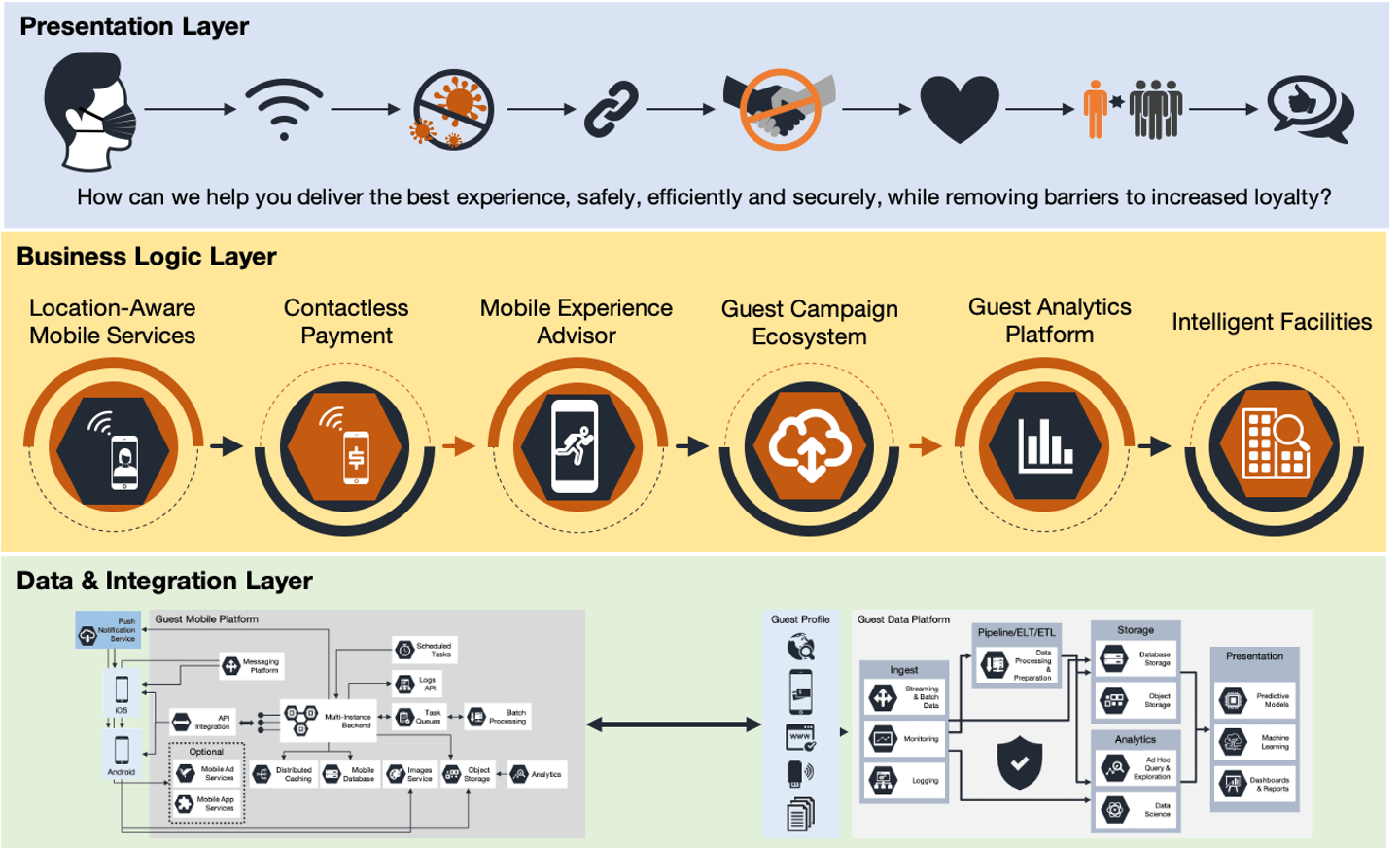IT: Follow these Important Steps to Ensure Guest, Staff Safety
The hospitality industry practically ground to a halt overnight once COVID-19 quarantine orders went into effect across the world. The resulting impact on hotels, resorts, and related destinations have been profound:
- Data from the American Hotel & Lodging Association released shows that 70% of hotel employees have been laid off or furloughed and 8 in 10 hotels throughout the nation are empty.
- As COVID-19 remains, occupancy rates in 2020 are projected to hit record lows, even worse than what the industry experienced during the Great Depression.
- For those facilities that remain open, staffs are minimized. Full-service hotels are operating with 14 employees, down from 50 before the crisis. Resort hotels that averaged about 90 staff members per location as recently as March 13 are now operating with about five employees per resort.
- Hotel supported job losses have reached nearly 3.9 million and about $2.4 billion in lost wages since the beginning of the health crisis.
Yet despite those alarming numbers, there are signs that the industry has hope of some recovery. COVID-19 restrictions are beginning to ease and hospitality professionals must adapt rapidly to the new cultural and safety norms their guests will come to expect. From preparing facilities before guest arrivals to protocols during their stay and the procedures following their departure must be revised and improved – and all must be in place to provide guest experiences that are healthy and safe. While these new practices will differ depending on the type of property amenities such as meeting rooms, spas, golf courses, swimming pools, dining halls and so on, there are a number of steps all of them can take immediately to regain their guests’ confidence – and their visits.
3 major steps staffs can implement include:
- Adhere to all federal government health and safety requirements and guidelines and provide staff with the proper training and education necessary to adhere to them. Use signage to inform guests of new policies to ensure they are aware your staff is practicing strict due diligence.
- For the check-in and check-out processes, facilities can implement one-way, contactless payment options such as email or e-billing. If check-in desks are still necessary, keep only the minimum necessary. Equip the desks with protective transparent barriers and provide disposable gloves for guests.
- Increase your cleaning regimen and communicate it to guests. Especially important are public areas – any that require physical contact such as door handles and shared surfaces should include nearby hygiene stations.
Turning to internal operations, hospitality IT leaders will be challenged to define the interactions, capabilities, systems and operations needed to ensure a safe, secure experience by focusing on three crucial layers:
- The Presentation Layer addresses the requirement to provision guest and employee experiences in accordance with mandatory or self-imposed sanitation regulations and expected social distancing protocols
- The Business Logic Layer defines the capabilities, systems, workflows and operations that will create safe and convenient guest and employee interactions
- The Data & Integration Layer drafts experience requirements and workflows into sound technology architectures*
Approaching these three layers as a cohesive, interdependent set of capabilities will guide the necessary and ongoing IT Operating Model adaptions required to reduce risk and increase guest and employee confidence. Hospitality IT Leaders will need to work collaboratively to quickly create a set of tasks associated with People, Process, Tools, Knowledge and Culture:
- People: Are the applicable executive teams, SRE teams, project teams and finance teams involved in resuming operations? Do all necessary stakeholders understand and use the same vocabulary to describe and implement required COVID-19 changes?
- Process: Are all stakeholders involved in establishing the additional governance and any new policies associated with resuming property operations? Is there a clear understanding of why new services may be required?
- Tools: Will current systems and operations support mandatory or self-imposed sanitation regulations and expected social distancing protocols? Will current systems and operations support automated, clean and practical guest and employee interactions?
- Knowledge: Are current analysis programs capable of using historical and real-time data to self-identify and promptly report abnormalities that may impose risk on guests and employees?
- Culture: Is there a regular cadence established for reviewing ongoing COVID-19 trends and revising IT resource utilization forecasts?
By evaluating and understanding the risks imposed on IT operations, hospitality IT leaders can enable a new normal that provides a safe, secure and connected experience for guests and employees.
*Technologent uses a Google Cloud Platform (GCP) reference model as the Data & Integration Layer in the Journey Map model.
About the Author
As Technologent’s Chief Business Architect with a strong technical background, Jason understands the power and promise of IT but appreciates the constraints it can impose on a business when IT is not aligned to the organization’s business requirements. In practice, Jason works closely with C-level executive and senior stakeholders to understand, clarify and document current and target state business capabilities, providing his clients with pragmatic solutions that deliver sustainable business value. This approach ensures that Jason’s clients are able to fully understand and measure the business value of their IT acquisitions and be certain that their investment decisions help them to achieve their goals. Over the past 18 years Jason has worked with many significant clients in various industry verticals and brings this experience, along with his strong technology background and his architectural approach to bear to provide measurable value in all his client engagements.

